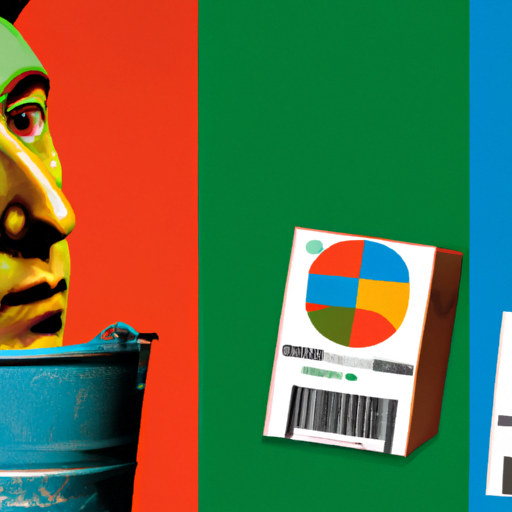-
Table of Contents
Packaging Innovations: From Sustainable Materials to Interactive Labels
As consumers become more conscious of their environmental impact and demand greater engagement with products, packaging innovations have emerged as a crucial area of focus for businesses. From sustainable materials to interactive labels, companies are exploring new ways to meet consumer expectations while reducing their ecological footprint. In this article, we will delve into the latest packaging innovations, examining their benefits, challenges, and potential impact on the industry.
The Rise of Sustainable Packaging
In recent years, sustainable packaging has gained significant traction as consumers increasingly prioritize eco-friendly options. According to a study by Nielsen, 73% of global consumers say they would change their consumption habits to reduce their environmental impact. This shift in consumer behavior has prompted companies to rethink their packaging strategies and explore sustainable alternatives.
One of the most notable packaging innovations in this space is the use of biodegradable and compostable materials. Traditional packaging materials, such as plastic and Styrofoam, can take hundreds of years to decompose, contributing to pollution and landfill waste. In contrast, biodegradable materials, such as plant-based plastics and paper, break down naturally and have a significantly lower environmental impact.
For example, the coffee industry has embraced sustainable packaging by replacing traditional plastic coffee pods with compostable alternatives. Companies like Nespresso and Keurig have introduced biodegradable coffee pods made from plant-based materials, reducing the environmental impact of single-use coffee packaging.
Another sustainable packaging innovation gaining traction is the use of recycled materials. By utilizing post-consumer recycled content, companies can reduce their reliance on virgin materials and minimize waste. This approach not only reduces the environmental impact but also appeals to eco-conscious consumers who value circular economy principles.
For instance, the fashion industry has been exploring sustainable packaging options to align with their sustainability initiatives. Brands like Patagonia and Adidas have started using recycled materials for their product packaging, including boxes and bags, reducing the need for new resources and minimizing their carbon footprint.
Interactive Labels: Engaging Consumers
In addition to sustainability, consumer engagement has become a key driver of packaging innovation. Interactive labels, also known as smart labels or intelligent packaging, offer a unique way to connect with consumers and enhance their overall product experience.
Interactive labels incorporate technologies such as QR codes, augmented reality (AR), and near-field communication (NFC) to provide consumers with additional information, promotions, or interactive experiences. By scanning a QR code or tapping an NFC-enabled label with their smartphones, consumers can access product details, nutritional information, or even personalized content.
One notable example of interactive labels is the wine industry. Wineries have started using augmented reality labels that come to life when scanned with a smartphone. Consumers can view videos of the winemakers, learn about the vineyard’s history, or even participate in virtual wine tastings, creating a more immersive and engaging experience.
Interactive labels also offer opportunities for brands to gather valuable consumer insights. By tracking consumer interactions with the labels, companies can gain a deeper understanding of consumer preferences, purchasing behavior, and product usage patterns. This data can then be used to tailor marketing strategies, improve product development, and enhance overall customer satisfaction.
Challenges and Considerations
While packaging innovations bring numerous benefits, they also present challenges and considerations for businesses. Here are some key factors to keep in mind:
- Cost: Sustainable packaging materials and interactive label technologies can be more expensive than traditional options. However, as demand increases and technology advances, costs are expected to decrease.
- Infrastructure: Implementing new packaging innovations may require changes to existing manufacturing processes and supply chains. Companies need to assess their infrastructure capabilities and invest in necessary upgrades.
- Consumer Education: Educating consumers about the benefits and proper disposal of sustainable packaging materials is crucial. Clear communication and awareness campaigns can help drive adoption and ensure proper recycling or composting.
- Technological Limitations: Interactive labels rely on smartphone compatibility and internet connectivity. Companies must consider the accessibility and availability of these technologies to ensure a seamless user experience.
The Future of Packaging Innovations
The packaging industry is continuously evolving, driven by consumer demands and technological advancements. As sustainability and consumer engagement remain top priorities, we can expect further innovations in the coming years.
Some potential future developments include:
- Advanced Materials: Researchers are exploring new materials, such as edible packaging made from seaweed or bioplastics derived from agricultural waste. These materials offer even greater sustainability benefits and reduced environmental impact.
- Smart Packaging: Interactive labels are likely to become more sophisticated, incorporating sensors and real-time data tracking. This could enable features like freshness indicators, temperature monitoring, or automatic reordering.
- Personalization: Packaging could become more personalized, with interactive labels displaying customized messages or promotions based on individual consumer preferences and purchase history.
Summary
Packaging innovations, from sustainable materials to interactive labels, are transforming the industry. Sustainable packaging options, such as biodegradable materials and recycled content, help reduce environmental impact and meet consumer expectations. Interactive labels, on the other hand, enhance consumer engagement and provide valuable insights for businesses.
While challenges like cost and infrastructure need to be addressed, the future of packaging innovations looks promising. Advanced materials, smart packaging, and personalized experiences are just a few potential developments on the horizon.
As businesses continue to prioritize sustainability and consumer engagement, packaging innovations will play a crucial role in meeting these goals and shaping the future of the industry.
